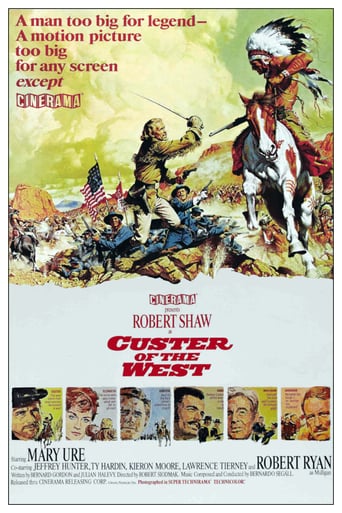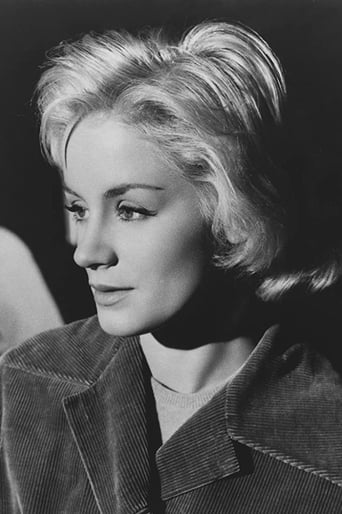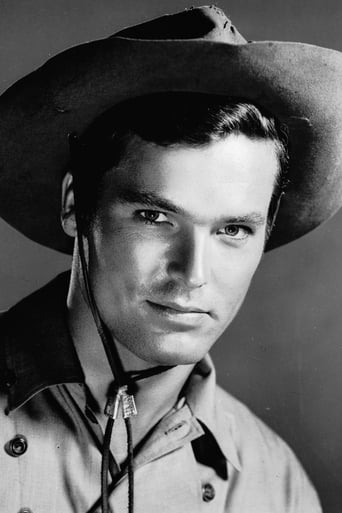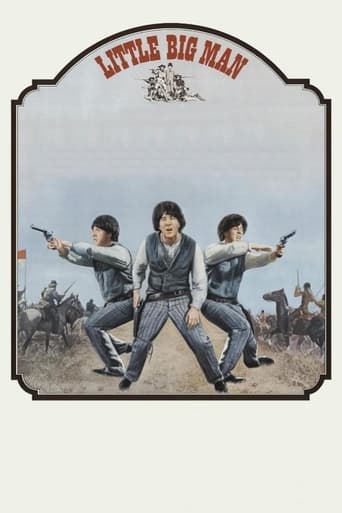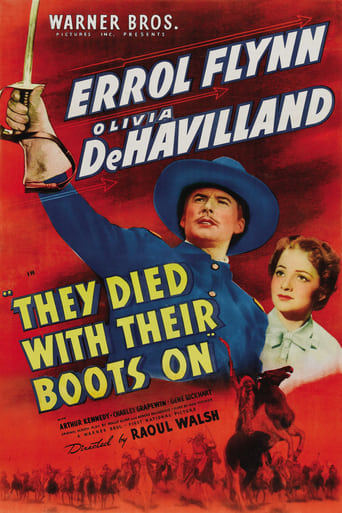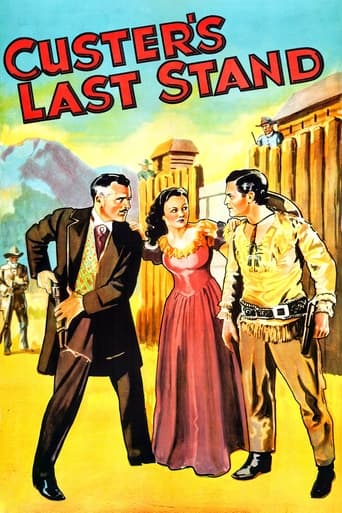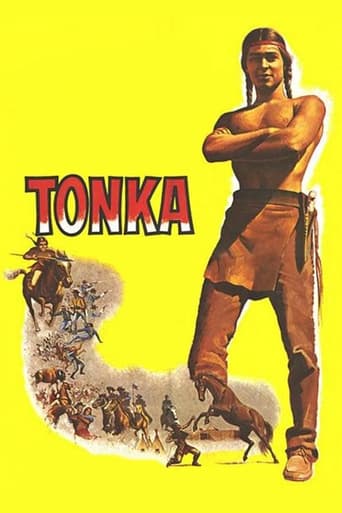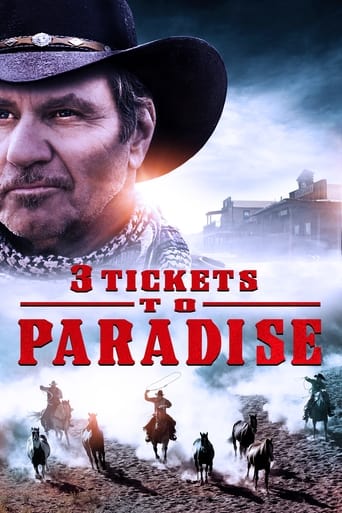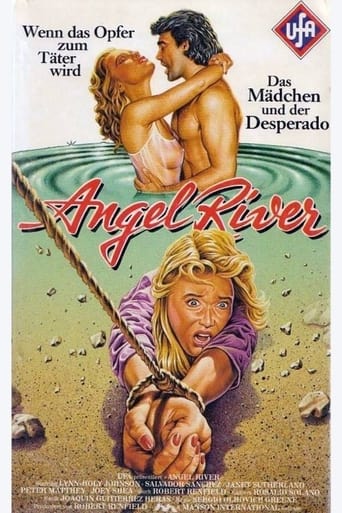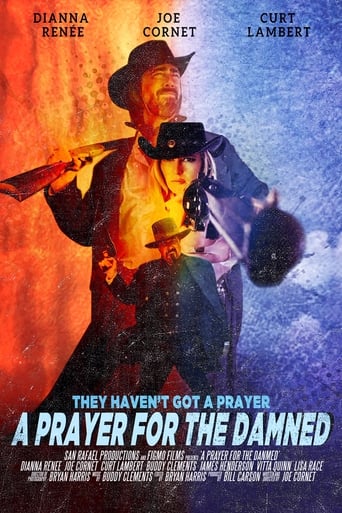Custer of the West (1968)
Biopic of General George Armstrong Custer from his rise to prominence in the Civil War through to his "last stand" at the Battle of the Little Big Horn.
Watch Trailer
Cast


Similar titles
Reviews
It looks bigger than it actually is but this telling of the Custer legend is a fascinating blend of history and histrionics. Many highly talented names are associated with this production to add worthy interest - Robert Siodmak as director, Philip Yordan as producer, Robert Shaw as Custer, Kieron More as Dull Knife (his last feature after becoming a charity worker), Mary Ure as Mrs Custer along with a list of other capable names in support roles. Perhaps this is the story the writers wanted to be closer to the facts? Who can tell any longer where the facts lie in this tale that has been mythicised within history and legend. Producer Yordan certainly has written many notable screenplays for major movies (King of Kings '61 ~ El Cid '61 ~ The Harder They Fall 56' - a long list...) It's also noteworthy for the suggestion that the Indans were pushed beyond endurance by many broken treaties - also that Custer vocally detested machine warfare - putting him at odds with the war ministry and railroad. Maybe it suffers by having been made in Spain? But, it's obvious that budget was certainly lacking for some aspects & the Cinerama widescreen 'effects' at times, were given more than their share of screen time (with the flume ride faring best). Given all this, it still manages to maintain a decent level of curiosity value. A big plus is supplied by Brazilian born/American Composer Bernardo Segall's powerful music score (a now rare and sought after sound track) These themes are marvellously orchestrated and can be (and are) played as melodic military march, descriptive action themes, and equally moving piano and orchestra soliloquy. The movie is a little long (and also exists in a cut version) but there are certainly far worse movies on this subject out there.
I've heard people complain of the historical inaccuracies of this film based on Custer's field position at the Little Big Horn.Stylizing history is not revising it. This film sequences real events in a stylized way, and emotionally depicts the events of Custer's short life.I refuse to accept the charge of historical revisionism from those who accept all out lies in so many other "based on a true story" films on the basis that the film shows no real bloody mutilations.Custer was about thirty-six, married, and brutally honest. Honest men always make enemies - those enemies may have been responsible for his early demise more so than any Cheyenne, by withdrawing from combat and leaving him isolated at Little Big Horn.This movie captures those events and, I believe, helps the viewer develop sympathy for all the characters, including poor Libby, his wife.
Various elements of this movie make it worth seeing, but this does not include the Last Stand itself, which is poorly done, a big disappointment. It fails in every category. After Lieutenant Colonel Custer (Robert Shaw) returns from giving testimony in Washington, he abruptly tells Captain Benteen (Jeffrey Hunter) and Major Reno (Ty Hardin) of the three-way march against the Sioux and Cheyenne that will take place, and the Seventh Cavalry takes off. There is no captivating dialogue. The scenes are rigid, unorganized, uninteresting, with no substantive interpretation of the cavalry's movements. The death of Custer is done in a pathetic, historically inaccurate attempt at dramatics that completely backfires. The viewer is left with no sense of drama or legacy of the battle. Still, the rest of the film is interesting. It represents a good effort at capturing the real-life chemistry of Custer and the flavor of the period's conflict between whites and Indians in the Midwest/Dakotas.**The comments below may contain spoilers**Custer is not portrayed like the hero in "They Died with Their Boots On." Instead, the portrait of Custer in this film seems close to the truth. "Custer of the West" was made only two years before "Little Big Man," during the Vietnam War. But it is not a satirized Custer that is presented; rather, it is a straight-shooting one. Robert Shaw plays Custer the glory hound, the one who desires action, the military man who will execute his duties without regard to whether they offend one's sense of ethics in mistreatment of Indians. He is a cold, rigid, hard-ass person. He takes over his camp with a preoccupation for discipline in the face of lazy soldiers who want to feign diseases when Indian-fighting duty calls. Major Reno is put down for his well-known alcoholism, and Custer makes clear to Captain Benteen he does not care about Benteen's sense of honor toward the Indians. It is an historical fact that Benteen hated Custer and refused to aid him when Custer requested help at The Battle of the Little Bighorn ("Custer's Last Stand"). This film seems to want to explain why.Would you really find the person described in the previous paragraph interesting? Libby Custer (Mary Ure) is worked into the movie more than incidentally, but nowhere are the inner workings of the man explored, with her or anywhere else. Shaw's Custer is an impersonal Custer, without much in emotions. Still, as he is cast, Shaw puts on a good performance, and I disagree with some of the commentators on this board who say he displays an English accent. He sounds American.The early parts of the film have a number of scenes involving good action, with some imagination, and wide-open-space cinematography. Whites are encroaching on Indian land; they are interested in mining and railroads. Indians attack railroads and stagecoaches and, at one point, a large white settlement celebrating Independence Day. Custer has a couple of minor skirmishes with the Indians. In one, he pursues the Indians across a desert and attacks them from below the rock face they have scaled in their retreat. As for major action, Custer's Seventh Cavalry, on orders from General Phil Sheridan, attacks and destroys Cheyenne Chief Black Kettle's village in the Battle of the Washita River, in Kansas. General Sheridan had been Custer's Civil War commander and long-time patron, and he was the one who gave Custer his post in the Dakotas. He calls Benteen a "bleeding heart" for being sympathetic to the Indians. Sheridan claims he has told all his officers "The only good Indian is a dead Indian." The real-life Sheridan claimed he never said that. Regardless, it is an historical fact that he was contemptuous of the Indians, and his attitude represented the mindset of the time. In the battle, The Seventh Cavalry kills not only Black Kettle and numerous warriors, but many women and children. Director Robert Siodmark holds back nothing in presenting what occurred in Custer's only major engagement against the Indians before the Last Stand.The most important scene of the film occurs after this battle. It, rather than the Last Stand, encapsulates the movie. A Cheyenne Indian visits Custer's HQ to ask him about his intentions, as Custer correctly perceives. Custer makes it clear he is not a moralist. He is not in a position to make the substantive decisions, he is an officer in the army, and will obey orders. If that involves trampling the Indians in violation of some ethical notion, so be it. Custer tells the Indian the problem is that the whites are more advanced than the Indians. He tells him that the Cheyenne were stronger than tribes from whom they took land, so they can expect the same from the whites who want their land. Later, the writers try to acquit Custer a little bit by 1) his remarks that the railroad being built will just lead to trouble from the Indians and complaining about what the Indians have to put up with and 2) his testimony in Washington on Indian Bureau corruption that the "Indian Problem" is the fault of the policymakers. This is historically true; according to Custer's testimony, corruption in the granting of Western post traderships and various other dishonest dealings were cheating Indians as well as the U.S. Cavalry. However, although the film presents miners intruding on Indian territory, it does not treat Custer's personal interest in gold mining.As I previously observed, I think "Custer of the West" is worth seeing in spite of the Last Stand's being poorly done. It would be most interesting for people who know some of the history surrounding Custer's postCivil War life and the conflicts with the Plains Indians leading up to the Last Stand.
SPOILER: Sorry, that should read *MINUS SEVERAL STARS* but they don't give me that option.I detest Custer and all he did post-Civil War. I'll start with that. I've been to the Custer Battlefield near Garryowen at least twice and feel that it is Holy Ground ... but not owing to the 7th Cavalry. Here ended the career of the man who would have been President, had his ambitions come to fruition. He would have also been remembered as the American Hitler.I've read historical accounts and military histories of the battle, National Geographic articles on the fascinating forensic examination archaeologists were able to make of the battlefield after grass fires swept away much of the overgrowth. And I've always been fond of saying that I can't watch him die on film enough times.((When he finally sent for Benteen and Reno, he had already charged into the trap: his message was (in part) "Bring rounds! P.S. BRING ROUNDS!" They were similarly ensnared in well-planned traps and could do little to help, however, not sitting on their hands protesting their sobriety in the shade of pleasant riverbank trees, let alone to each other: they were not together.)) Well, I just checked this stinker out from the local library, and I take my fond saying back. I've just seen him die one too many times. Or more accurately, I've seen *somebody* flog himself around on screen and *claim* to be Custer. I have no idea where he's flogging around, it certainly doesn't look like the Custer Battlefield -- not even remotely.Benteen is played in one of the worst performances I've ever seen from late and talented Jeffrey Hunter as a simultaneously wooden and spineless gopher; Reno as an incompetent and insubordinate drunken lout. The families of these competent (but overwhelmed) heroic officers should have legal recourse to sue director Siodmak for their portrayals in this travesty.Historically, geographically, politically, this movie crosses the line from "creative interpretation" to blatant twisting and reversal of anything resembling facts. Even Custer's portrayal in the wonderful farce, "Little Big Man", came much closer to the truth, and the California terrain that stood in for the Little Big Horn region in an old B&W "Twilight Zone" time-travel episode was more accurate than this.The whole film seems to have been concocted to give the Cinerama audiences a few roller-coaster moments (a runaway wagon ride, a log flume ride, there were a few forgettable others) and even these went on *long* after they'd already proved their point.A truly awful film. I'm taking it back to the library tomorrow first thing: it's drawing too many flies. I also want my 2 hours and 21 minutes back.

